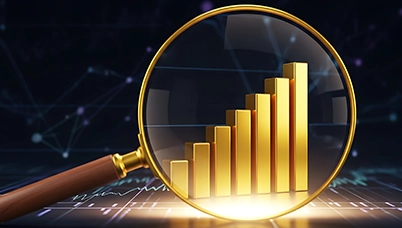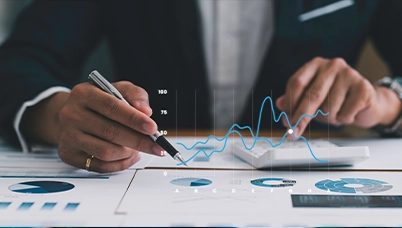Planning to buy Silver?
Posted On Thursday, Jun 02, 2011
Now most of you must be aware of our "Path to Profit" meets - forums where we have very interesting discussions with audiences who wish to know about the simple route to investing. We have travelled to 13 locations across the country, and encountered numerous questions on the past, present and future of equity markets, the mantra for risk-adjusted returns, and the de-jargoning of diversification. What I enjoy most about these sessions is the opportunity to get inside an investor`s mind - queries that show you how investors think. For instance, when we first set out on the Path to Profit in 2009, investors were very intrigued about understanding "RISK", and given that we had just witnessed the markets crash a year earlier, their concerns were well anticipated. And recently, we have received a lot of queries on - Owning Gold! Probably an indication of investors warming up to the idea of diversifying their portfolio, finding a hedge in case history repeats itself.
So, we have tried to explain, in quite the same manner as we do in the Golden Truth (and as narrated below), how owning gold is not really a silly suggestion. In fact, it`s quite the contrary - owning gold is a requisite, a must-have safe asset for your portfolio.
And since we are talking about gold, questions on Silver, the poor man`s gold as it is called, follow us around too.
"Should we buy silver?" - an investor asked at a recent Path to Profit meet.
Aha! Now that was a question I knew would surface sooner or later, and here it was finally! With silver surging through the economy with huge gains over the past one year and given its lower value compared to gold, we were long expecting this question.
So, should you buy silver? Well, why don`t you start by telling me why exactly do you want to invest in silver? Do you plan for it to be a diversification tool, or is it just to add as a means of capital appreciation? Do you have a plan for your investment in silver?
Before we move to silver, here`s why most people invest in gold...
Yes, gold has grown at a CAGR (Compounded Annual Growth Rate) of 17.5% over the previous decade (as shown by Bloomberg data) but the real purpose of investing in gold is:
Effective portfolio diversification:
Gold`s investment returns are fairly independent from other financial assets like stocks, bonds etc. Any change in the price of other financial assets does not correlate with changes in gold prices. Hence, because of its low correlation with other assets, gold can protect your portfolio from dipping in case of economic risks.
Less volatile:
Gold, as an asset class, is less volatile than equity, and hence stabilizes your portfolio against negative events.
Safe-haven asset against recession & depression:
Gold protects investors against economic, political, or currency crises.
Hedge against inflation and currency devaluation:
During inflation, more money gets pumped into the economy thus reducing the value of the currency. In situations like these, gold may be used as a hedge to reduce the volatility.
Gold preserves purchasing power:
Gold has helped preserve the purchasing power of money over long time horizons. Especially today, when central banks have been generously debasing the value of currencies by printing at will, gold becomes an important asset to own as it would help protect from the resultant loss of purchasing power.
Can silver do as well?
Let us look at historical performance of gold and silver in times of distress i.e. when the equity markets are in the bear phase.
Gold`s performance over the decade
Silver | ||||||
Data Source:Bloomberg
An interesting trend, isn`t it? Every time the Sensex (representation of equity markets) has dipped, gold has emerged as the knight in shining armour. And where does silver feature in all of this? Silver has outperformed gold only once - August 1997 to October 1998. So, if you are looking at silver for a more affordable diversification tool, then silver doesn`t quite make the mark as compared to gold, at least not if you follow the historical trend listed in the table above.
If you consider price behavior, silver can be best described as "half gold, half copper". Like gold, the price of silver is based on its role of being used as a currency, and yet, like copper, a significant part of silver`s price comes from its growing use as an industrial commodity.
Since 2003, economic activity growth led to an increase in the demand for industrial commodities. Thus, like other base industrial metals, silver prices also saw a rapid increase.
But, when the global crisis hit the economy in 2008, the demand for industrial commodities literally collapsed along with their prices. And, this period saw a sharp decline in the price of silver.
Even as a form of "money", gold appears more credible. Why else would countries like India, China, Russia, and Mexico buy gold and not silver as a reserve asset?
Are you still looking to invest in silver for diversification?
One sided predictions
Recommendations to buy silver seem to be the most popular advice doing the rounds of the commodities circuit, promoted by predictions that silver is likely to outperform gold going ahead. Is silver really heading to take over gold?
Honestly, we don`t know!
But, what we do know is that the investment gurus who have recommended silver taking over gold, have probably focused only on silver`s upside potential. What about the risk involved due to silver`s relationship to economic activity? Because silver is also an industrial commodity it has an equally strong possibility to collapse in times of a crisis.
Let`s try to understand how industrial commodities and silver are related. Take a look at this chart which highlights the relationship between the silver/gold ratio with that of copper/gold ratio and the S&P500 Index over the past 12 years.

Source:Bloomberg
A few observations:
- Silver has outperformed gold during periods when -
- Copper (also an industrial commodity) has outperformed gold, and
- When the broad stock market has been trending upward i.e. when speculations about growth have been popular
- Silver has underperformed gold when growth-oriented speculations lost their popularity, especially during a financial/banking crisis
Points to remember:
If you are upbeat about the economy, you should be bullish about silver in the intermediate term.
If your confidence in the economy is not much to speak about, it would probably be sensible to be bearish about silver in the intermediate term.
The major concern for silver`s growth is that, even the slightest banking crisis or deflation in the future will have a similar effect on the silver/gold ratio as the last three such episodes (the early-1990s, the early-2000s, and 2007-2008), when silver lost value in comparison to gold, reaching almost 80-100 ounces of silver per ounce of gold.
But, if you believe that we have a utopian world ahead of us, with no real possibility of any economic or financial crisis happening in the future, then simply ignore gold, and go right ahead and get yourself some silver.
Can Silver Sustain?
The last few years have seen erratic financial movements, some of which have been rare occurrences. In the midst of such turbulence will silver hold strong, or will it rather move towards a bubble?
Adrian Ash, Head of Research, BullionVault explains this phenomenon in his latest article, excerpts of which are as below:
Silver prices just made a 3.5 standard deviation move; the "Z-score" - in late-April`s case, a reading of 3.46. The Z-score is counted in standard deviations - aka "sigma" - and anything above 2.0 sigma probably means you`re looking at an outlier... a bubble perhaps. Because that kind of Z-score, at two standard deviations or more, marks the peak of Japan`s 1989 equity bubble, the 1999 US tech-stock bubble, and the 2006 US housing bubble.  Note that when silver jumps, it really moves - so the Z-score doubles between each number on the axis. For silver, a reading of 2.0 or more shows on fewer than 1-in-38 of all trading days since January 1969. April`s peak of 3.46 was rarer than 1-in-a-hundred. And to date, all such "outlier" moves have all ended badly in silver. The average 1-year return for anyone buying silver at a Z-score of 2.0 or more has been minus 18.3%. And just so you know, that compares with an average gain on gold, if bought at a "bubble-top" Z-score of 2.0 or more, of over 11%.  Five times in the last 42 years, the gold price in dollars has risen so fast that its year-on-year gain has exceeded two or more times the standard deviation of all those daily year-on-year changes. Only two of those "bubble outliers" then blew up, however, and two of them (1975-1976 and then May 2006) marked a mere hiatus before gold prices rose once again (eight-fold and near-tripling respectively). Source: BullionVault.com |
Gold Risk Increases So, dear investor, tread carefully when you choose to allocate to silver.
Gold is a time tested asset which acts as an excellent portfolio diversifier and a real hedge against the vagaries of inflation.
Therefore, if you chart a pyramid for your investments, it should be a part of its base, along with your safe money/ crisis money distinctly kept aside.
Silver on the other hand, should ideally be at the top of the pyramid, where you have your play money i.e. either a speculative bet on silver as a commodity or based on demand supply fundamentals. But, do remember, that silver is likely to provide exposure just the way your equity investments would, since both are dependent on economic activity – so, make your choices carefully.
Disclaimer:
The views expressed in this article are the personal views of the Fund Manager of Quantum Gold Fund. The views constitute only the opinions and do not constitute any guidelines or recommendation on any course of action to be followed by the reader. This information is meant for general reading purpose only and is not meant to serve as a professional guide/investment advice for the readers. This article has been prepared on the basis of publicly available information, internally developed data and other sources believed to be reliable. Readers are advised to seek independent professional advice and arrive at an informed investment decision before making any investments. Please visit – www.quantumamc.com/disclaimer to read scheme specific risk factors.
Related Posts
-

Gold Monthly for December 2025
Posted On Thursday, Dec 04, 2025
After a series of events and a strong rally in October 2025, gold demonstrated a mixed performance in November 2025, moving back and forth within a defined range.
Read More -

Equity Monthly for December 2025
Posted On Wednesday, Dec 03, 2025
Markets continued the rising trend in October with Sensex gaining 2.2%.
Read More -

Debt Monthly for December 2025
Posted On Tuesday, Dec 02, 2025
As we approach the end of the calendar year, we find ourselves at a pivotal moment, with the market split on the likelihood of an upcoming rate cut.
Read More



